Description
Test Bank
CHAPTER 1: INTRODUCTION TO MEDICAL LAW, ETHICS, AND BIOETHICS
1. Which definition most accurately describes applied ethics?
a. The legal application of moral standards that concern benefiting the public.
b. The practical application of moral standards that are meant to benefit the patient.
c. The legal application of moral standards that benefit the patient.
d. The legal application of moral standards that are based on the sincerity of a person’s beliefs.
2. Illegal actions are
a. usually unethical.
b. seldom unethical.
c. not unethical.
d. not related to ethics.
3. Laws are rules or required actions that are
a. written by the people to control the actions of criminals.
b. moral decisions about how the population should live.
c. ethical considerations of the cultural beliefs of the population.
d. prescribed by an authority and have a binding legal force.
4. The purpose of law is to
a. provide a way of measuring our actions.
b. punish us when our actions break the law.
c. provide moral decision-making standards.
d. a and b.
5. The study of a branch of philosophy related to morals, moral principles, and moral judgments is called
a. ethics.
b. law.
c. medical practice acts.
d. utilitarianism.
6. The quality of being virtuous is called
a. sympathy.
b. utilitarianism.
c. morality.
d. empathy.
7. Unethical acts are
a. not always illegal.
b. always illegal.
c. not related to the law.
d. uncommon in society.
8. Which definition is correct for medical practice acts?
a. The practice of medicine in all fifty states.
b. The practice of medicine in a particular state, including the requirements and methods of licensure.
c. The practice of medicine in all 50 states and what constitutes unprofessional conduct.
d. The practice of medicine in a particular state, including the requirements and methods of certification.
9. Medical practice acts may include laws regarding
a. conviction of a felony.
b. unlicensed persons practicing medicine.
c. improper record keeping.
d. b and c.
10. The study of ethics includes the use of
a. moral principles.
b. moral judgments.
c. logic.
d. all of the above.
11. The mandate of medical ethics is the
a. welfare and confidentiality of the patient must be of least concern.
b. welfare and confidentiality of the patient must be of most concern.
c. principle of the greatest good for the greatest number must be of most concern.
d. principle of formal consideration of the interests of others must be of most concern.
12. Which definition best describes utilitarianism?
a. An ethical theory based on the principle of the greatest good for the greatest number
b. A legal ruling based on the principle of the greatest good for the greatest number
c. A legal ruling based on small portions of society
d. Based on moral entitlements by virtue of being human
13. An example of utilitarianism might include
a. an organ for transplant going to the person needing it the most.
b. providing Medicare for only those who need medical coverage.
c. a duty to provide healthcare to all Americans.
d. all of the above.
14. Rights-based ethics emphasizes the
a. individual rights of persons.
b. rights of society as a whole.
c. duty of persons to adhere to laws.
d. character traits of persons.
15. The purpose of medical professional organizations is to
a. define the laws of the profession.
b. punish medical professionals for breaking the law.
c. set ethical standards for practice within the profession.
d. determine salaries and benefits for medical professionals.
16. The purpose of a cost/benefit analysis in relation to medical care is to
a. justify the cost of a treatment as compared to the benefit.
b. justify only the benefit of a treatment.
c. provide an estimate of the cost of a treatment.
d. make sure no one “falls through the cracks” for treatment.
17. Empathy requires the ability to
a. feel sorry for someone else.
b. feel a sense of commitment to a person.
c. understand the feelings of another person.
d. have a distant and unemotional attitude toward the patient.
18. Which of the following is the best definition of confidentiality?
a. The right of all employees to have certain procedures followed when they believe their rights are in jeopardy
b. One person exerting power over another
c. Faithfulness or commitment to a person or persons
d. The ability to safeguard another person’s information
19. Due process in the workplace refers to
a. the right of all employers to certain procedures when their rights are in jeopardy.
b. the responsibility of employers to provide a safe work environment.
c. the right of all employees to certain procedures when their rights are in jeopardy.
d. all of the above.
20. The best definition of sexual harassment is a form of sex discrimination in which
a. males exert power over females.
b. any one person exerts power over another.
c. any one male exerts power over males.
d. females exert power over males.
21. Extending equal pay requirements to all persons who are doing equal work is known as
a. due process.
b. cost/benefit analysis.
c. comparable worth.
d. fidelity.
22. A three-step model developed by Kenneth Blanchard and Norman Vincent Peale is used to evaluate
a. alcoholism.
b. legal issues.
c. comparable worth.
d. an ethical dilemma.
23. The best definition for ethics is
a. sincerity and feeling.
b. religious beliefs.
c. moral principles.
d. emotional responses.
24. A branch of applied or practical ethics is called
a. medical ethics.
b. biomedical ethics.
c. bioethics.
d. b and c.
25. Bioethicists are
a. specialists in the field of medical law.
b. specialists who give thought to ethical concerns as they pertain to medicine and medical research.
c. researchers in medical technology.
d. all of the above.
CHAPTER 2: THE LEGAL SYSTEM
1. Congress is the _____ branch of the federal government for the United States.
a. executive
b. legislative
c. judicial
d. constitutional
2. The individual states
a. may vary on how they interpret and implement state laws.
b. may vary on how they interpret and implement federal laws.
c. must administer federal law the same.
d. a and c.
3. The purpose of a constitution is to
a. set up a government.
b. define the power of the government to act.
c. set limits on the government’s power.
d. all of the above.
4. Statutes are laws passed by
a. the state legislature.
b. Congress.
c. the president.
d. Congress or the state legislature.
5. A rule or law made by an agency is called a/an
a. bill.
b. regulation.
c. statute.
d. act.
6. Common law is established through
a. court decision.
b. federal law.
c. state decision.
d. municipal decision.
7. Which definition is the best for precedent?
a. The ruling of a current case that is applied to a current case when the facts are different
b. The ruling in an early case that is applied to a subsequent case when the facts are the same
c. Let the decision stand
d. Liability for an injury to another person even if there was no intent to harm the other person
8. Civil law includes
a. torts.
b. contracts.
c. medical malpractice.
d. all of the above.
9. A civil injury or wrongful act committed against another person or property that results in harm and is compensated by money damages is
a. civil law.
b. tort law.
c. contract law.
d. administrative law.
10. Civil law is commonly handled and settled
a. by the judge.
b. by the governor.
c. outside the courtroom.
d. by the federal government.
11. Intentional torts include
a. assault and battery.
b. defamation.
c. false imprisonment.
d. all of the above.
12. Action taken to confine a patient against his or her will is
a. defamation.
b. false imprisonment.
c. assault.
d. battery.
13. Which is the best definition of libel?
a. Speaking false and malicious words concerning another person, which brings injury to his or her reputation
b. Making false and/or malicious statements about another person
c. Any publication in print, writing, pictures, or signs that injures the reputation of another person
d. Attempts to deceive another person
14. Professional exercise of the type of care that a reasonable person would use in a similar circumstance is
a. the standard of care.
b. negligence.
c. a breach.
d. an unintentional tort.
15. Failure or omission to perform professional duties to an accepted level is called
a. fraud.
b. negligence.
c. unintentional tort.
d. consideration.
16. Which of the following best defines an expressed contract?
a. Agreement is shown through inference by signs, inaction, or silence
b. Agreement is entered into orally (clearly stated) or in writing
c. Failure to comply with the terms of the agreement
d. All of the above
17. A contract between the patient and the physician can be terminated for
a. failure to follow instructions on the part of the patient.
b. missed appointments by the patient.
c. failure to pay for services.
d. all of the above.
18. The result of breaking a criminal law may be
a. a fine.
b. imprisonment.
c. loss of a medical license.
d. all of the above.
19. Which carries the punishment of fines or imprisonment in jail for up to a year?
a. A misdemeanor
b. A felony
c. Negligence
d. Battery
20. The federal court has jurisdiction a over case when
a. the case relates to federal law.
b. the dispute occurred on or in international waters.
c. another country’s citizen and a U.S. citizen are in dispute with a monetary value of over $75,000.
d. all of the above.
21. Which of the following is the lowest to highest division of the state courts?
a. Municipal, circuit, supreme
b. Circuit, municipal, supreme
c. Supreme, circuit, municipal
d. Municipal, supreme, circuit
22. The person being sued in a court of law is the
a. plaintiff.
b. jury.
c. defendant.
d. litigator.
23. A court order for a witness and certain documents to appear in court is a
a. deposition.
b. subpoena duces tecum.
c. discovery.
d. subpoena.
24. An expert witness is considered to have
a. knowledge of the crime committed.
b. a legal background (for example, a lawyer).
c. knowledge or experience beyond the jury.
d. all of the above.
25. When testifying in court, it is important to
a. tell the truth.
b. state the facts.
c. include your opinion.
d. a and b.
CHAPTER 3: IMPORTANCE OF THE LEGAL SYSTEM FOR THE PHYSICIAN AND THE HEALTHCARE PROFESSIONAL
1. The purpose of the medical practice acts is to protect the
a. healthcare worker.
b. physician.
c. general public.
d. state.
2. The medical practice acts are established by the
a. state legislature.
b. state medical board.
c. federal government.
d. licensed physicians of a state.
3. The medical practice acts
a. provide for a medical examining board in each state.
b. establish the baseline for practice of medicine in each state.
c. forbid the practice of medicine without a license.
d. all of the above.
4. The board of examiners in each state grants licensure through
a. examination.
b. endorsement.
c. reciprocity.
d. all of the above.
5. Requirements for medical licensure may include
a. proof of a successfully completed approved internship/residency program.
b. information about any past convictions or history of drug or alcohol abuse.
c. proof of medical malpractice insurance.
d. a and b.
6. Successful completion of the National Board Medical Examination (NBME) provides
a. reciprocity.
b. endorsement.
c. registration.
d. certification.
7. Reciprocity is the practice of
a. cooperation by which a state grants a license to practice medicine to a physician already licensed in another state.
b. granting a license to applicants who have successfully passed the National Board Medical Examination.
c. requiring a set number of continuing medical education units in a designated time period to ensure currency in the field of practice.
d. withdrawing the right to practice for severe misconduct, commission of a crime, or personal incapacity to perform one’s duties.
8. Medicare/Medicaid fraud, rape, murder, larceny, and narcotics convictions are examples of crimes that could lead to
a. reciprocity of a license.
b. a license being endorsed.
c. a license being revoked.
d. all of the above.
9. An example of a person practicing without a medical license is
a. a physician signing Dr.
b. a licensed practical nurse signing RN.
c. a registered nurse renewing a license as an RN.
d. a paramedic performing CPR.
10. A voluntary process in which an agency requests an official review of its operation is called
a. examination.
b. endorsement.
c. accreditation.
d. reciprocity.
11. Accreditation of allied health educational programs is provided by
a. JCAHO.
b. CAAHEP.
c. FLEX.
d. HIPAA.
12. The ordinary skill and care that medical practitioners must use is called
a. the prudent person rule.
b. confidentiality.
c. the standard of care.
d. the statute of limitations.
13. The provision of information to a patient that a reasonable person would want before making a decision about treatment is
a. the standard of care.
b. the statute of limitations.
c. confidentiality.
d. the prudent person rule.
14. Confidentiality involves
a. keeping private all information about a person and not disclosing it to a third party.
b. disclosing private information about a person to a third party only when a patient’s written consent is given.
c. providing information by phone when requested by a consulting physician.
d. b and c.
15. The period of time that a patient has to file a lawsuit is the
a. Medical Patients Rights Act.
b. statute of limitations.
c. statute of limitations for murder.
d. medical practice acts.
16. An adult who acts in the court on behalf of a child in litigation is called
a. a Good Samaritan.
b. respondeat superior.
c. a guardian ad litem.
d. a prudent person.
17. Let the master answer refers to
a. the physician who assists in an emergency situation outside the workplace.
b. the employer who assumes responsibility for the actions of employees.
c. the medical assistant who unsuccessfully performs CPR.
d. scope of practice.

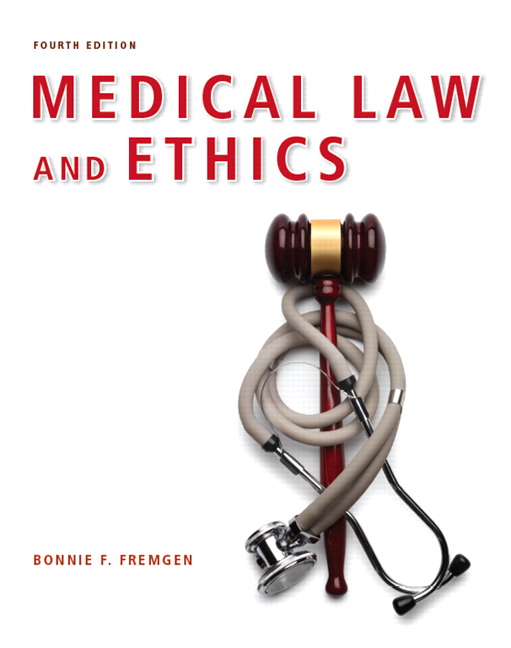
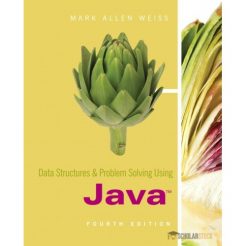
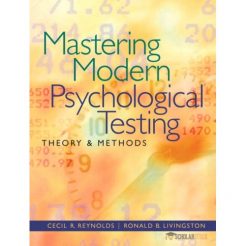
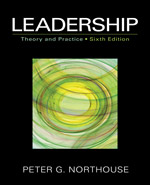
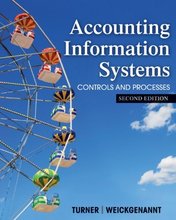

Reviews
There are no reviews yet.